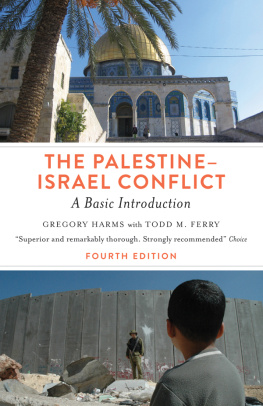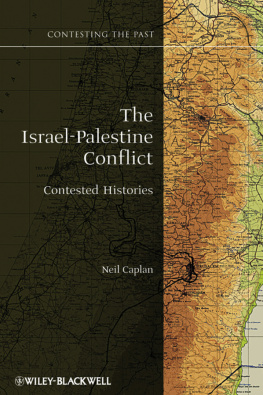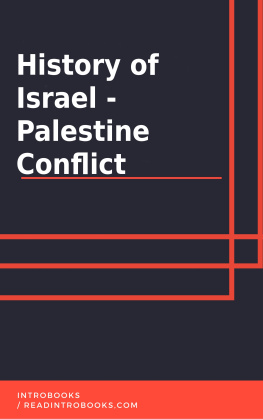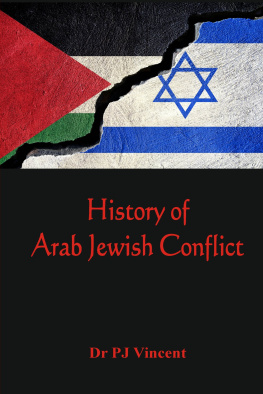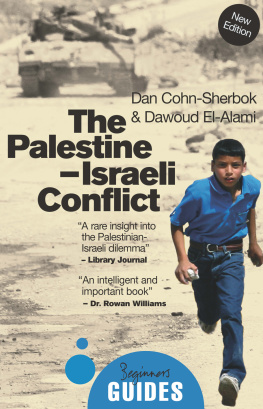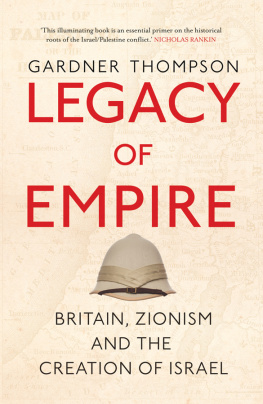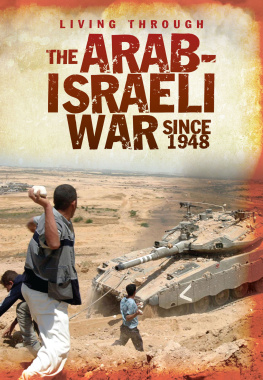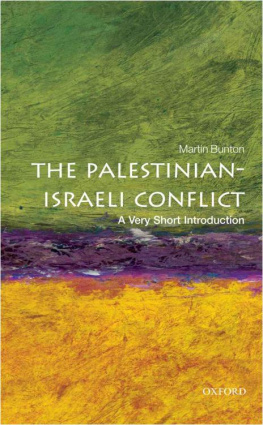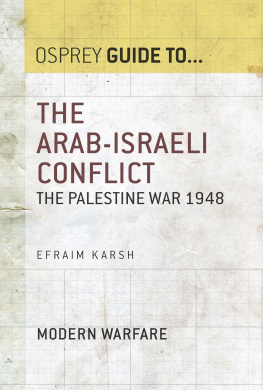The PalestineIsrael Conflict
The PalestineIsrael Conflict
A Basic Introduction
Fourth Edition
Gregory Harms
with Todd M. Ferry

First published 2005
Fourth edition published 2017 by Pluto Press
345 Archway Road, London N6 5AA
www.plutobooks.com
Copyright Gregory Harms and Todd M. Ferry 2005, 2008, 2012, 2017
The right of Gregory Harms and Todd M. Ferry to be identified as the authors of this work has been asserted by them in accordance with the Copyright, Designs and Patents Act 1988.
British Library Cataloguing in Publication Data
A catalogue record for this book is available from the British Library
ISBN 978 0 7453 9927 0 Hardback
ISBN 978 0 7453 9926 3 Paperback
ISBN 978 1 7868 0113 5 PDF eBook
ISBN 978 1 7868 0115 9 Kindle eBook
ISBN 978 1 7868 0114 2 EPUB eBook
This book is printed on paper suitable for recycling and made from fully managed and sustained forest sources. Logging, pulping and manufacturing processes are expected to conform to the environmental standards of the country of origin.
Typeset by Stanford DTP Services, Northampton, England
Simultaneously printed in the United Kingdom and United States of America
for my brother, Jason
Contents
Maps
Maps 25 courtesy of PASSIA. Map 6 courtesy of UN-OCHA.
Acknowledgments
From the First Edition
I would like to offer profound thanks to: Scott Darley, Ben Nowicki, Shawn Mitchell, Annie Higgins, Jeffrey Ball (Dove Booksellers), Shany Shlomo, Lahan Sarid, Ali Abu Shawish, Naim Toubassi, Zaid Alayobi, Ryan Robinson, Jerilyn Tabor, Michael Pugh, Alfonso Flores V, Clement Cherian, Jan Larsen (the Herald News), and George David Miller. Many thanks are owed to Alex Lubertozzi and Jennifer Fusco at Prologue Publishing for much-needed direction and guidance. To Roger van Zwanenberg, Julie Stoll, David Castle, Robert Webb, Matthew Seal, and everyone at Pluto Press I am thankful for realizing this project. I am grateful to Professor Arthur Goldschmidt Jr and Professor Charles D. Smith for their availability, honesty, and advice. I am indebted to my mother, Martha Harms, and George Savich for their early and much-needed help. Grant and Genevieve Harms (both of whom passed during the writing of this book, and a second dedication would go to them), and my father, Joseph, and Diana Harms all provided me with humbling support and hospitality at the farm.
I am grateful for immediate and unbending support of this project to Mark Eleveld, who upon my initial consideration of the idea firmly encouraged me to get started. Special thanks go to my friend and colleague, Todd Ferry, who thoughtfully came along at the right time and whose knowledge and expertise made a superb contribution to this book. Vikram Sura, who I met in Jerusalem, has been a tremendous source of support and counsel ever since. For innumerable reasons I am indebted to Michael Slager, countless conversations with whom have sharpened my thinking on all manner of subjects (thanks, Michael). I owe an impossible amount of gratitude to Tom Jasper for his selfless generosity and encouraging fireside chats (and to Givon and Madison Jasper for helpin their Uncle G).
Lastly, I am grateful to the people in Israel and Palestine who, far too numerous to list here, showed me hospitality, friendship, and openness during my time spent researching there in June 2002. It is in these qualities and people that their leaders can and must find an exemplar.
All those noted above contributed to this project in a multitude of ways, the sum total of which made this possible. For the existence of this book they have an equal share in its arrival; for the contents and any errors therein, I alone am responsible.
Gregory Harms
Preface to the Fourth Edition
Whos fighting and what for?
Mick Jagger, Altamont Raceway, 1969
The PalestineIsrael conflict is a fixture in news media the world over. And though taking place on a very small area of land, the tensions between Israel and Palestine send shockwaves around the globe. The conflict spanned most of the previous century and all of the present one so far. It has been documented, recorded, and analyzed in meticulous scholarly detail. We know well the history and its multitude of moving parts.
Yet, confusion persists, as do polarity and controversy. Especially in the United States, there exists a bewilderment and a tendency to deal in fallacies, fictions, and mythology. Oftentimes, in reaction to the news or conversations about the conflict, you might hear people make remarks such as: Those people have been fighting for thousands of years. Or: Theyre fighting because one guys ancestors killed the others. Or: It has to do with religion and goes back to the Bible. Given the manner in which the conflict is packaged by the media as a perpetual tallying of death and violence with no historical context it is not surprising that many commonly make such judgments. But as with many things, what actually lies beneath the received imagery is quite different from the surface we are shown. This book attempts to provide what the news doesnt.
When I first set to working on the first edition of this book in late 2001, it was in response to two issues: Firstly, I had for years been confused with the utter lack of introductory material on the PalestineIsrael conflict. There was, of course, an abundance of books on the subject, but they were either big, specialized, or both; for such a topical and important issue, people had precious little to choose from if they wanted to get a 101 sense of the basics. Secondly, and more specifically, the September 11 attacks brought matters of the Middle East much closer to home. Not that this necessarily made them more important, but the experience was a stimulus in my decision making. Shortly after that Tuesday morning, I started assembling this project.
In producing the book I could never find I merely had to take stock of what was not being made available to readers and the news-watching public, namely: an introduction to the entire history of CanaanPalestineIsrael, from the Paleolithic period to the present day. As a result, the first half of this book has almost nothing to do with the conflict directly; but a basic knowledge of the regions deep history is crucial to understanding and demythologizing the conflict. Naturally, the best way to dispel any myth is to present the facts that undermine it, and therefore the ancient history is covered in this book to demonstrate that those people have not been fighting for thousands of years.
The book is broken up into three main sections. Part I addresses the background history of the region from the dawn of humankind to the final moments of the Ottoman Empire (early 1900s). Part II introduces the people involved in the conflict: the Palestinians and the European Jews who founded Zionism and eventually established the state of Israel. Part III discusses the actual conflict, from its earliest moments onward through to the current situation.
No prior knowledge is assumed on the part of the reader. Moreover, questions I have repeatedly encountered at lectures have given me a base for what the reader might be wondering: What is the West Bank? Is (or was) Palestine a country? Is religion a factor? What is Zionism? Were the Jews or Arabs there first? I have tried to clarify these, while endeavoring to anticipate further curiosities and possible confusion. However, if I have overlooked something that you were hoping to have answered, or a topic I have discussed remains muddled, please tell me about it: .
Next page
